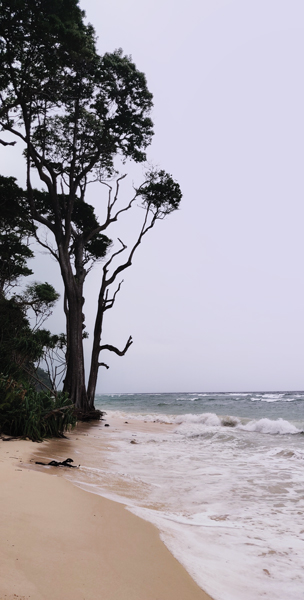Island-hopping in the monsoon-soaked Andamans
In the aftermath of a rain, you might catch a mesmerising rainbow! But make no pre-bookings — hotels, ferry rides or watersports. Because at Andamans, everything depends on the rains. There could be last-minute cancellations,” my husband and I were warned by a friend while we were planning a romantic holiday to the charming archipelago comprising 572 islands located amidst the Bay of Bengal and the Andaman Sea. So, with nothing booked and only our air tickets in hand, we landed at the Port Blair airport. After visiting five islands, we discovered that there’s a lot you can do even as the monsoon weaves its magic, leaving the land grey and wet.
Day one, we checked into a modest hotel and took the 9 am ferry the next morning to Havelock Island. The ride isn’t a pleasant affair. Many tourists get seasick on this ride. Don’t boast about riding on the luxury cruise that costs thrice the price of a government ferry! On this boat, you will have to put up with the ordeal of listening to miserable songs being played on its TV screen.
Havelock
Disembarking at the crowded jetty at Havelock, we befriended a local autorickshaw driver who helped us check into a nearby hotel — the cozy Green Valley Resort, with cottages set between coconut palms, beside a stony beach, and with hammocks hanging under the tropical trees. The cottage cost ₹1,700 a night, which in balmy weather would have cost ₹4,500 a night. We soon learned to savour the blessings of the monsoon — the crowd had thinned, the scents and colours of the flowers and palm trees looked and felt more vivid; the rain only makes Andamans more charming and a lot cheaper — almost by 50 per cent.
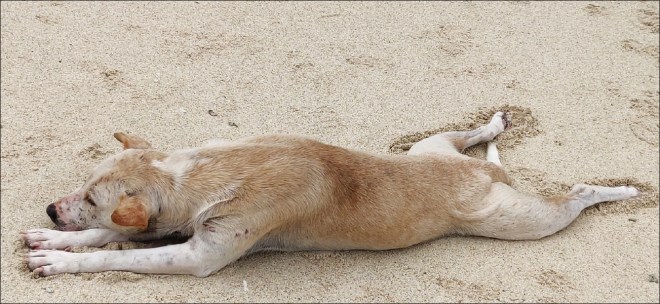
Restaurants are lined up closely, giving you an opportunity to explore different outlets for your meals. We had to dine at our resort just once, thanks to a downpour that lasted the entire night and a good part of the next morning as well. By noon, we were happy to get out, clad in raincoats, on a hired scooter (₹350 a day) to explore the island. We reached the spectacular Radhanagar beach on the east side of the island. The ride through the towering trees was spectacular.
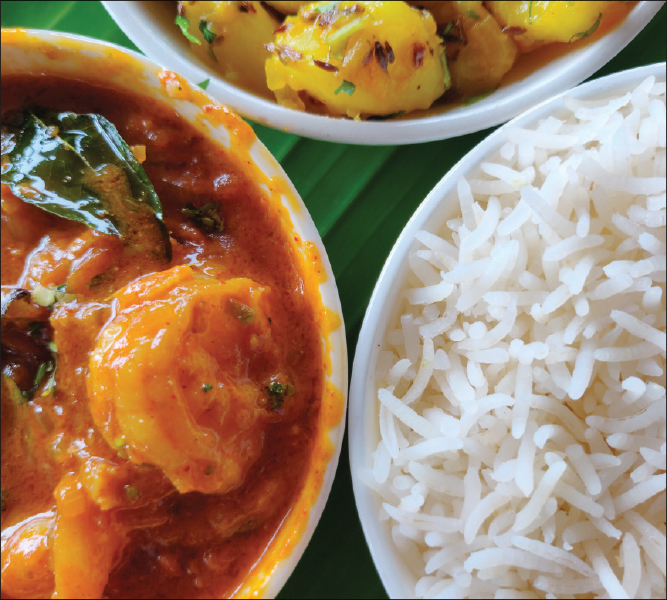
To warm yourself up after a cold and wet day on the beach, you could head straight to Something Different, a beachside resto-bar. Sip on some pina colada in a pineapple cup and do try the steamed fish with scallions and ginger. It’s a splurge but totally worth it. If you decided to step out and watch the serene beach and corals from the restaurant walkway, you will be surreptitiously charged ₹100 extra for ‘reef watching’!
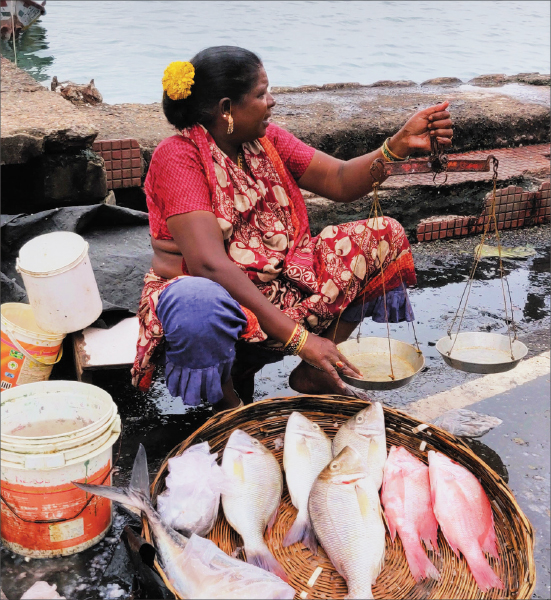
For our first scuba dive, we visited the sport centres close by to get a good idea of what was on during such a lean season. We visited three centres and settled for ₹2,000 a person (otherwise costs ₹4500), all-inclusive of a scuba training, 10-metre dive for half-an-hour and pictures and videos of us underwater. After a safety briefing, we were at a depth of about 8.5 meters in the sea! Seeing small red scorpionfish, yellowtail snappers, colourful parrotfishes, cute little yellow box fish feeding on algae and reddish-orange coloured worms in the shape of cypress trees makes this a must-do in the Andamans.
Neil
To head to Neil Islands, use the government ferry. For the locals, a ticket costs ₹62, but tourists have to pay ₹550. You can opt to sit on the deck for the entire ride and if you are seasick, a crew member will fetch you a lemon and some salt to calm your senses. Located 37 km south of Port Blair, Neil is known as the vegetable bowl of the Andaman Islands. There are no fancy restaurants in Neil Island — shacks by the beaches with plastic tables and chairs serve freshly made food in the open-air setting. A decent fish thali starts at only ₹140 and the mustard okra is outstanding! Remember you get the most delicious rasgullas in the Andamans only in Neil and make sure to buy them.
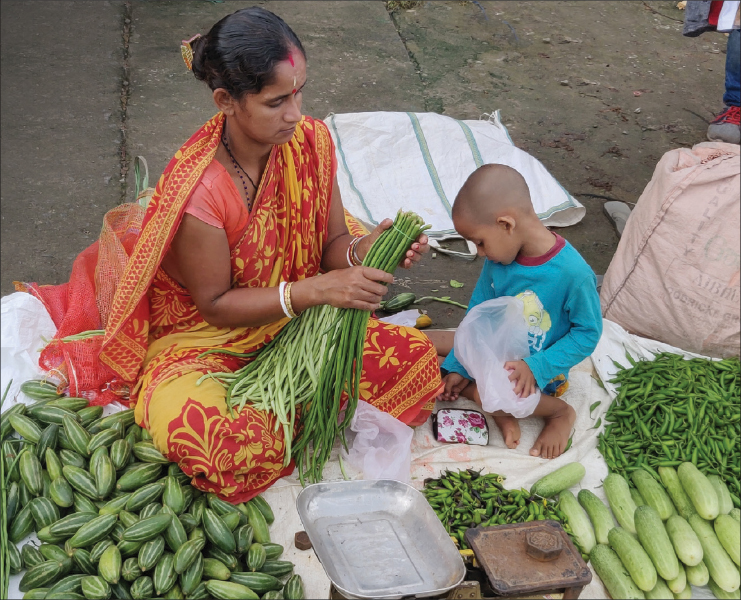
Unfortunately thanks to the grey monsoon sky at Neil, we did not get to watch the sun dipping down at the gorgeous Lakshmanpur beach. Neither did we catch it rise at the Sitapur beach. But everything is beautiful and laidback in the rains… unexplored coral reefs, the deserted white sand beaches, and tropical woodlands! So calm that you may catch dogs and squirrels performing yoga! Although the local guides will harass you to hire them, take a walk alone to the Natural Coral Bridge at Beach No 2 in Neil. The bridge is a beauty and the shallow stony beach around it boasts of amazing marine life. You will get to see hundreds of starfish and sea cucumbers alongside green shore crabs.
Ruins of Ross Island
A 15 minute-boat ride from Port Blair will bring you to Ross Island, where you can spend three hours walking through the eerie ruins of the old British settlement almost completely swallowed by strangler fig trees, peepal trees and green moss. The rains add to the gloom and if you want to see the creepiest ruins, head to the cemetery that dates back to 1857 on the western side of the island. A small detour off the main path will cut you from the crowds, and a bridge across the sea will lead you to a charming old lighthouse beside the statue of the Lone Sailor.
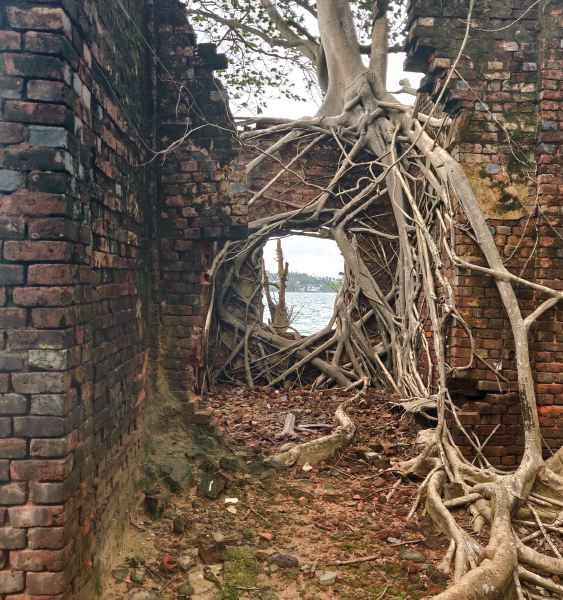
It was the Ross Island that took the massive brunt of the 2004 tsunami and saved the city of Port Blair from major destruction. Unless you want to do an expensive scuba dive or snorkelling, going to the North Bay Island will be an utter waste of time and since Mount Harriet, during the monsoons, is infested with leeches, we decided to give it a miss.
Baratang
The most exciting part of the trip was the drive to the Baratang Islands, 150 km from Port Blair. After reaching Jirkatang Post, a convoy guides you through a 49-km-stretch to the Jarwah Reserve Forest, where you can’t stop your vehicle to take pictures or get out of it. On the other end of the Jarwah Reserve Forest is the Middle Strait jetty. A ferry takes you to the other side of the strait in about 15 minutes and small boats transport you to the mangroves of Baratang, from where a tough 1.8-km-trek leads you to the natural limestone caves. The natural formations are breathtaking and your guide-cum-boat driver will show you formations ranging from mythical characters to giant crocodiles and human faces. We spotted two Jarwah men walking in the rain under a huge green leaf on our way back through the reserve forest.
Port Blair
The city tour includes a visit to the Cellular Jail that stands as a dark reminiscence of British rule in the Indian subcontinent. Solitary confinement of freedom fighters in individual cells earned the jail its name, ‘Cellular’. You might be scared out of your wits to find movement inside a locked dingy cell, but hey! it’s just an over-enthusiastic tourist trying to go back in time to see what it was like to remain in solitary confinement. After visiting a few museums, you can head to Corbyn’s Cove beach to spend the rest of the evening. This is one of the most sought-after beaches in Port Blair, having several Japanese World War-II bunkers.
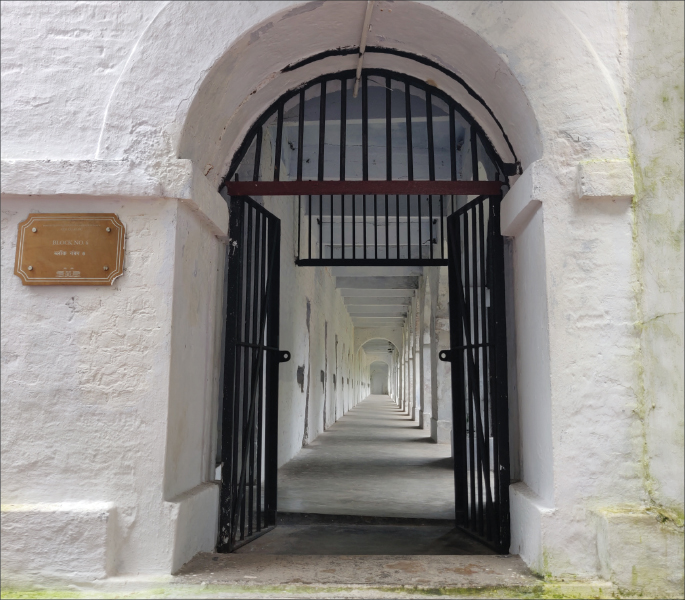
Wandoor and Chidiya Tapu are must-visit beaches, 30 and 35-km from Port Blair respectively. On the way to Wandoor, our auto driver told us stories of survival from the 2004 tsunami, as we passed by fields and homes still flooded with seawater from the tsunami that ravaged this region 15 years ago. “The sticky soil wouldn’t let it drain away from the land and from our memories. Close to 10,000 lives were lost then,” he said grimly.
It was the Ross Island that took the massive brunt of the 2004 tsunami and saved the city of Port Blair from major destruction.
We wandered through the markets of Port Blair, almost every evening of our stay. The market is dominated by women vendors brimming with the fresh catch of the day. The vegetables and fruits look fresh and sparkling in the rain. After a heavy rainfall it feels marshy, sticky and crowded — a sea of bargaining humans, dead fish and hungry mongrels. By the end of the trip we knew exactly where the ATMs were, had named the mongrels loitering around our homestay, got acquainted with the woman selling fish by the jetty, the timing of the Somu’s pani puri stall, and the location of Bhuvaneshwari akka’s lemon soda shop.
It became a routine to drink tender coconut water, eat bananas and tuck in fried fish at every other restaurant. This unfamiliar land suddenly began to feel like home, making you wish you could stay a little longer.
Pictures by Kiran Zehra

